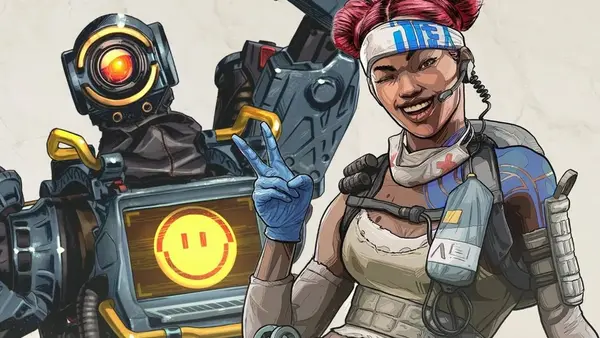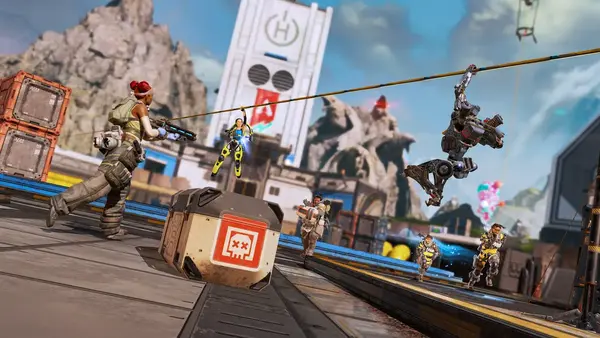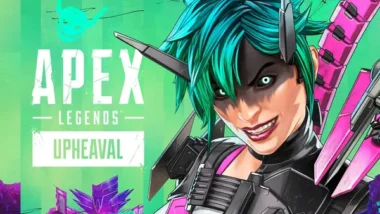Introduction
Apex Legends, Respawn Entertainment’s hit battle royale, has gained acclaim for its dynamic gameplay, diverse characters, and team-oriented strategy. However, as the roster of legends continues to grow, balancing the game becomes increasingly challenging. The introduction of new characters often leads to “power creep,” where newer legends overshadow older ones, causing a shift in the meta and raising questions about character viability. This article delves into the complexities of balancing legends, the effects of power creep, and potential solutions to maintain fairness in Apex Legends.

Understanding Power Creep in Apex Legends
Power creep occurs when new legends or abilities are introduced with stronger or more versatile powers than existing characters.
How Power Creep Manifests
- New Abilities: Fresh legends often feature unique abilities that outshine older ones.
- Shifting Meta: Players gravitate toward newly introduced legends, sidelining older options.
Examples in Apex Legends
- Seer’s Dominance: Upon his release, Seer’s ability to detect enemies with precision significantly disrupted the meta.
- Horizon’s Launch Impact: Horizon’s mobility made older legends like Pathfinder feel less essential.
The Impact of Power Creep on Gameplay
Power creep affects not only character selection but also the overall player experience.
Reduced Character Diversity
- Players often stick to meta-defining legends, reducing diversity in team compositions.
- Legends like Caustic or Mirage can feel irrelevant in high-level play due to limited utility compared to newer characters.
Unbalanced Matches
- Teams using overpowered legends gain a distinct advantage, leading to frustration among opponents.
- New players may struggle to adapt when older legends fail to match the efficiency of newer ones.
Balancing Legends: A Constant Tug-of-War
Balancing the roster in Apex Legends is an ongoing challenge for Respawn Entertainment.
Buffs and Nerfs
- Developers frequently tweak abilities to balance legend performance.
- Example: Wraith’s hitbox adjustments to counter her high pick rate and survivability.
Reworking Older Legends
- Respawn reworks underperforming legends to keep them relevant.
- Example: Lifeline’s revival shield removal and improved care package utility.

Community Feedback: The Driving Force Behind Changes
The Apex Legends community plays a significant role in shaping balance updates.
Pro Players and Streamers
- Competitive players often highlight meta issues and suggest adjustments.
- Streamers amplify community concerns, ensuring they reach Respawn’s radar.
Casual Player Feedback
- Casual players offer insights into how changes impact lower-skill brackets.
- Forums like Reddit and Twitter are hotspots for balance discussions.
Lessons from Other Games
Respawn can draw inspiration from other games to handle power creep and balance issues.
Overwatch
- Blizzard uses seasonal patches to keep the meta fresh and promote character rotation.
- Example: Limiting certain heroes in specific seasons to encourage diversity.
League of Legends
- Riot Games regularly releases comprehensive patch notes explaining balance decisions.
- Older champions receive visual and gameplay updates to stay competitive.
Proposed Solutions to Combat Power Creep
Addressing power creep and balance issues requires a multi-faceted approach.
Rotating Meta Adjustments
- Introduce seasonal buffs or nerfs to encourage diverse team compositions.
- Example: Boost underused legends’ abilities temporarily to explore their potential.
Expanding Legend Reworks
- Continuously rework older legends to align them with current gameplay mechanics.
- Example: Adding new passive abilities to legends like Mirage or Gibraltar.
Transparent Communication
- Regularly communicate balance intentions with the community through detailed patch notes or developer blogs.
- Foster trust by explaining the reasoning behind buffs, nerfs, and reworks.
The Role of Legend Synergy in Balance
Balancing doesn’t just involve individual characters but also team dynamics.
Encouraging Synergistic Play
- Design new legends with abilities that complement older ones.
- Example: Legends like Bloodhound and Fuse working well together due to complementary scanning and area control.
Limiting Overpowered Combinations
- Monitor overpowered team synergies and adjust abilities accordingly.
- Example: Tweaking Revenant and Octane’s push strategy to maintain fairness.
Addressing the New Legend Hype
The hype surrounding new legends often leads to imbalance upon release.
Slowing the Power Curve
- Release new legends with modest abilities, gradually buffing them based on performance.
- Example: Launch a new legend with average stats and monitor gameplay before making major adjustments.
Limiting Instant Viability
- Make new legends slightly challenging to master, ensuring only skilled players can maximize their potential.
- Example: Introduce complex abilities requiring strategic timing.
Apex’s Long-Term Balance Vision
As Apex Legends evolves, maintaining balance will be crucial for retaining player trust and engagement.
Emphasizing Fair Play
- Prioritize fairness by ensuring no legend feels indispensable or redundant.
- Example: Regularly reviewing pick rates to identify overused or underused characters.
Engaging the Community
- Collaborate with players through surveys and public test environments (PTEs).
- Use data-driven insights to shape future updates.

Conclusion
Balancing Apex Legends’ roster is a complex but essential task to maintain its competitive integrity and fun factor. Power creep remains a significant challenge, but with thoughtful adjustments, proactive reworks, and active community engagement, Respawn Entertainment can ensure that every legend has a chance to shine.


